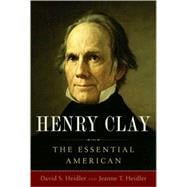
Note: Supplemental materials are not guaranteed with Rental or Used book purchases.
Purchase Benefits
What is included with this book?
| Prologue | p. xi |
| The Slashes | p. 3 |
| “My Hopes Were More than Realized” | p. 26 |
| “Puppyism” | p. 54 |
| The Hawk and the Gambler | p. 84 |
| Uncompromising Compromiser | p. 120 |
| “I Injured Both Him and Myself” | p. 154 |
| A Thousand Cuts | p. 186 |
| Losing the Bank, Saving the Union | p. 219 |
| Whig | p. 259 |
| “I Had Rather Be Right than Be President” | p. 284 |
| Three Campaigns | p. 317 |
| Four Letters | p. 354 |
| “Death, Ruthless Death” | p. 394 |
| The Last Gamble | p. 418 |
| “What Prodigies Arise” | p. 445 |
| “The Best & Almost Only True Friend” | p. 476 |
| Acknowledgments | p. 493 |
| Notes | p. 497 |
| Bibliography | p. 551 |
| Index | p. 569 |
| Table of Contents provided by Ingram. All Rights Reserved. |
The New copy of this book will include any supplemental materials advertised. Please check the title of the book to determine if it should include any access cards, study guides, lab manuals, CDs, etc.
The Used, Rental and eBook copies of this book are not guaranteed to include any supplemental materials. Typically, only the book itself is included. This is true even if the title states it includes any access cards, study guides, lab manuals, CDs, etc.
Excerpted from Henry Clay: The Essential American by Jeanne Heidler, David Heidler
All rights reserved by the original copyright owners. Excerpts are provided for display purposes only and may not be reproduced, reprinted or distributed without the written permission of the publisher.